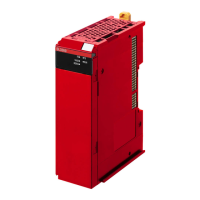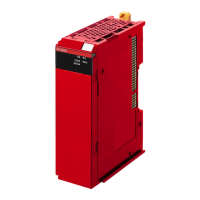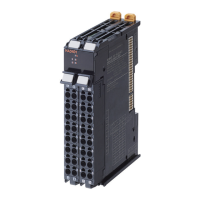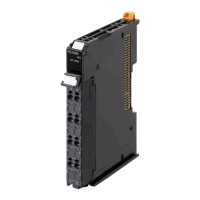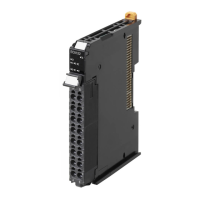Note In this example, a connection is established with the originator’
s tag list with tags a to g (inputs), which are
in a tag set called SP1_IN, and the target’s tag list with tags i and ii (outputs), which are in a tag set called
SP1_OUT.
CIP Message Communications
User-specified CIP commands can be sent to devices on the EtherNet/IP network.
CIP commands can be sent and their responses received by executing the CIP communications in-
structions from the user program in the CPU Unit.
EtherNet/IP Unit CPU Unit
EtherNet/IP
port
CIP command
CIP response
CIP message
Ethernet
(EtherNet/IP)
C I P _ S E N D
EtherNet/IP
port
CPU UnitEt
herNet/IP Unit
By specifying a route path, you can send CIP messages (CIP commands and responses) to a device
on another CIP-based network segment (CIP routing function for message communications). Howev-
er, since the starting point of route path is the CPU Unit, it is necessary to set the route path from the
CPU Unit through the
NX-series EtherNet/IP Unit.
The maximum number of levels of CIP routing via the ports is eight for any combination of CS, CJ, NJ,
and NX-series CPU Units. Note that the number of levels of IP routing using an L3 Ethernet switch is
not counted in the number of levels of CIP routing via the ports.
• Because there are two EtherNet/IP ports, CIP routing is possible by the NX-series EtherNet/IP Unit
alone.
EtherNet/IP Unit
Et
herNet/IP
port 1
EtherNet/IP
port 2
Ethernet
(EtherNet/IP)
Ethernet
(EtherNet/IP)
CPU Unit
1 Features and System Configuration
1-9
NX-series EtherNet/IP Unit User's Manual (W627)
1-3 Introduction to Communica-
tions Services
1
1-3-1 CIP (Common Industrial Protocol) Communications Services
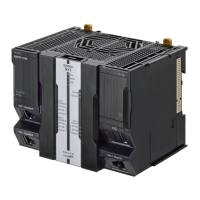
